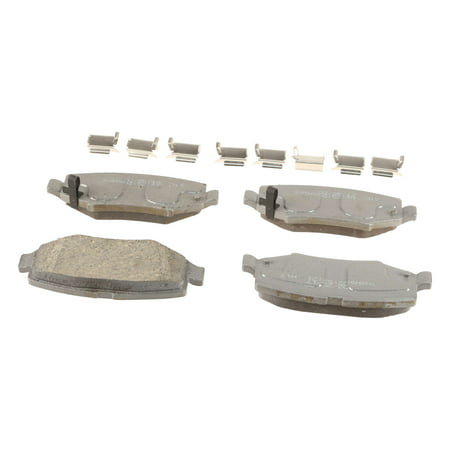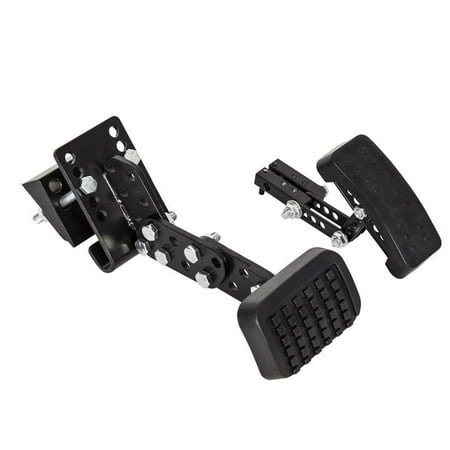Wagner Brake Thermoquiet Ceramic Brake Pad Set
Wagner ThermoQuiet OE Ceramic Disc Pad Set THE “ONE-PIECE” BRAKE PAD THAT PROVIDES QUIETER BRAKING. Wagner® ThermoQuiet® brake pads are the quieter, “one-piece” brake pads. They feature Integrally Molded Sound Insulator (IMI™) that integrates the friction material, backing plate and insulator into a single high strength component. The application-specific design spreads out heat, sound and vibration over a much larger surface area for quieter operation. A unique application-specific laser-shaped friction optimizes pad-to-rotor interface for better braking performance. The proprietary Wagner® OE21™ formulations feature a complex matrix of materials that replicate the functions of copper while setting new benchmarks and providing across-the-board improvements in NVH control, stopping power, durability and dusting characteristics. Features and Benefits: 35% Quieter 15% More stopping power Longer lasting Cleaner wheels Install Wagner Brake products with total confidence

35% Quieter15% More stopping powerLonger lastingCleaner wheelsInstall Wagner with total confidence
A brake is a mechanical device that inhibits motion by absorbing energy from a moving system. It is used for slowing or stopping a moving vehicle, wheel, axle, or to prevent its motion, most often accomplished by means of friction.
A ceramic is any of the various hard, brittle, heat-resistant, and corrosion-resistant materials made by shaping and then firing an inorganic, nonmetallic material, such as clay, at a high temperature. Common examples are earthenware, porcelain, and brick.
The earliest ceramics made by humans were brick walls used for building houses and other structures, while pottery objects (pots, vessels, or vases) or figurines made from clay, either by itself or mixed with other materials like silica, hardened and sintered in fire is the common belief of how ceramic was made. Later, ceramics were glazed and fired to create smooth, colored surfaces, decreasing porosity through the use of glassy, amorphous ceramic coatings on top of the crystalline ceramic substrates. Ceramics now include domestic, industrial, and building products, as well as a wide range of materials developed for use in advanced ceramic engineering, such as semiconductors.
The word ceramic comes from the Ancient Greek word κεραμικός (keramikós), meaning "of or for pottery" (from κέραμος (kéramos) 'potter's clay, tile, pottery'). The earliest known mention of the root ceram- is the Mycenaean Greek ke-ra-me-we, workers of ceramic, written in Linear B syllabic script. The word ceramic can be used as an adjective to describe a material, product, or process, or it may be used as a noun, either singular or, more commonly, as the plural noun ceramics.





Reviews
There are no reviews yet.